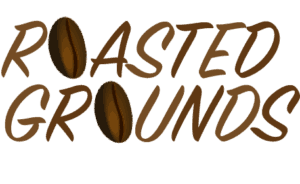Most coffee drinkers know coffee beans are roasted but what are the stages of coffee roasting? More importantly, how do these stages affect the flavor of your morning brew? That’s what I’m going to cover in this article.
Roasting has more effect on your coffee’s flavor than any other variable in the coffee process. A good roast can make a mediocre bean taste great and make an expensive bean taste horrible. So a solid understanding of the stages of coffee roasting is key for hobby enthusiasts and professional roasters alike.
These stages apply whether you’re roasting using a stove, an air popper, a drum roaster, or a professional-grade roaster.

Drying
When you start the coffee roasting process, the beans slowly start to dry out and lose their moisture. They will turn from the olive green color they are as raw beans to a pale yellow, and then begin to brown. The moisture inside the beans evaporates into steam as the beans past water’s boiling point (212° F). This steam can smell like bread.
First Crack
At this stage, the coffee beans continue to heat up. They begin to pop, with a crackling sound like popcorn. This is often referred to as the “first crack,” and it indicates the beans are around 375° F. The beans are now lightly roasted – sometimes known as a cinnamon roast because of the cinnamon-color of the beans. You could stop the roasting process at this point and grind the beans for drinking. But let’s assume you keep going.
Medium Roast
After the first crack, the beans continue to expand. The crack allows them to swell to almost double the size of a green bean in this process. The coffee beans throw off chaff, a thin husk similar to the inner husk of a peanut. Most roasters have a chaff collector, but you’ll have to separate the chaff by hand if you’re roasting in a pan or on a baking sheet.
The beans are around 425° F now. There’s a lot of smoke generated from the roasting process. The internal sugars of the bean begin to caramelize and the beans will smell like coffee. You have to watch carefully at this point, because the beans will begin to change quickly.
Second Crack
At the second crack stage, seconds can mean the difference between a rich, dark roast and a burnt mess. The beans will make a popping noise again, fainter than the first crack. Their temperature is around 440° F. There’ll be a lot more smoke. The fats within the beans will liquefy and rise to the surface, resulting in an oily sheen.
Cooling
Once your beans are as dark as you desire, start the cooling phase. For beans roasted in the oven or on a stovetop, this means removing them from the heat source. You may want to fan them as well until they’re cool. Do not handle the beans while they’re hot – you will get burned. Most home roasters have a cooling stage which cools the beans automatically.
Resting
You can grind and brew coffee beans once they’re cool, but I recommend letting the beans rest for a few hours or even a day. I typically roast in the evening and then grind and brew the next morning. Letting the beans rest allows them to discharge the carbon dioxide gas generated during the roasting process and evens out the flavor profile of the beans.
Enjoying
Store your beans in an airtight container and enjoy a cup of freshly roasted coffee!
Common Roast Names
Newcomers to coffee roasting may be confused by the names associated with different levels of roasting. I’ve included the table below with common roast level terms. Just realize that these terms are HIGHLY subjective. One person’s City is another’s City Plus or even Full City. Different beans roasted to the same level will also taste different. It’s all a matter of your preference, so don’t get too wrapped up in the labels. Just enjoy your coffee.
| Stages of Coffee Roasting | Common Roast Names |
| First Crack | Cinnamon |
| City Roast | |
| Medium Roast | City Plus |
| Full City | |
| Second Crack | Full City Plus |
| Vienna | |
| French |
For a comprehensive book on this subject, pick up Home Coffee Roasting by Kenneth Davids (Amazon link).
